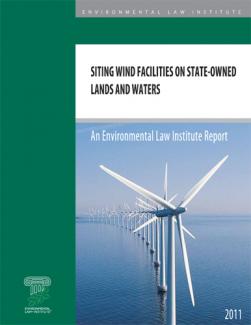
Siting Wind Facilities on State-Owned Lands and Waters examines opportunities that states have explored for siting commercial-scale wind facilities on lands and waters that are government-owned. State trust lands and forests and the beds of rivers and the Great Lakes offer potential opportunities for wind power that can help advance state renewable energy goals. States own large parcels that may facilitate siting commercial-scale facilities; they also control lands that may be intermingled with private or federal lands suitable for wind development. And states are the stewards of submerged lands, and hence are essential players for siting on the Great Lakes or near shore ocean waters. Leases of state lands for wind power may provide revenue to state treasuries.
ELI found that 10 western states have entered into agreements allowing commercial wind facilities on state trust lands. A number of states have authorized wind developments on submerged lands, or developed regulations to allow these developments. A few states have declared particular lands off-limits to commercial-scale wind, such as natural resource agency-managed lands in Vermont and Maryland. ELI recommends that states inventory their state-owned lands and waters to determine where there are areas suitable and unsuitable for wind power facilities. States should also review and revise their leasing regimes to deal with potential needs of wind facilities, such as calculation of suitable rents and royalties and the types and length of lease terms.
Access the related study, State Enabling Legislation for Commercial-Scale Wind Power Siting and the Local Government Role.